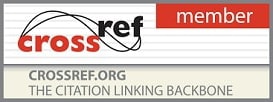
- Printed Journal
- Indexed Journal
- Refereed Journal
- Peer Reviewed Journal
Impact Factor: Impact Factor(RJIF): 5.3
International Journal of Home Science
2016, VOL. 2 ISSUE 1, PART D
Evaluation of Vitamin D Status in Patients with Epilepsy
Author(s): V Swapna, KA Parvathy, CV Harinarayan, Deepika Anand
Abstract:
Background: Patients with epilepsy face an even greater risk of vitamin D deficiency than healthy population, as seizures may interfere with their ability to move outdoors and remain active which limits the exposure to sunlight necessary for producing vitamin D.rnObjective: Correction of vitamin D deficiency is an issue of concern and attention in patients with epilepsy. The present study was undertaken to understand and analyze the effect of vitamin D deficiency in epilepsy patients.rnMethods: Epileptic subjects with an age range of 3 to <80 years of both gender, below poverty line category, physically active patients on anti-epileptic drug treatment regularly, attending epilepsy clinic of the Super Specialty Hospital Sri Venkateswara Institute of Medical Sciences (SVIMS), Tirupati were included in the study. Blood samples were collected from selected subjects after informed consent and their willingness to be a part of the study and samples were analysed for parathromone and 25- (OH)2 D3 levels.rnResults: The present study was undertaken to evaluate the effect of vitamin D deficiency in epilepsy patients. The mean serum Parathormone levels were found to be higher in epileptic males whereas females showed high prevalence of vitamin D deficiency.rnConclusions: The present study revealed that both epileptics and non- epileptics have vitamin D deficiency. In both the groups the number of subjects with normal vitamin D levels is very less, compared with vitamin D deficiency and insufficiency. In both males and females of epileptic and non-epileptic groups, when categorized based on 25(OH)2 vitamin D3 levels, the Parathormone levels were inversely proportional to 25(OH)2 vitamin D3 levels. Females have high prevalence of vitamin D deficiency than males.
Background: Patients with epilepsy face an even greater risk of vitamin D deficiency than healthy population, as seizures may interfere with their ability to move outdoors and remain active which limits the exposure to sunlight necessary for producing vitamin D.rnObjective: Correction of vitamin D deficiency is an issue of concern and attention in patients with epilepsy. The present study was undertaken to understand and analyze the effect of vitamin D deficiency in epilepsy patients.rnMethods: Epileptic subjects with an age range of 3 to <80 years of both gender, below poverty line category, physically active patients on anti-epileptic drug treatment regularly, attending epilepsy clinic of the Super Specialty Hospital Sri Venkateswara Institute of Medical Sciences (SVIMS), Tirupati were included in the study. Blood samples were collected from selected subjects after informed consent and their willingness to be a part of the study and samples were analysed for parathromone and 25- (OH)2 D3 levels.rnResults: The present study was undertaken to evaluate the effect of vitamin D deficiency in epilepsy patients. The mean serum Parathormone levels were found to be higher in epileptic males whereas females showed high prevalence of vitamin D deficiency.rnConclusions: The present study revealed that both epileptics and non- epileptics have vitamin D deficiency. In both the groups the number of subjects with normal vitamin D levels is very less, compared with vitamin D deficiency and insufficiency. In both males and females of epileptic and non-epileptic groups, when categorized based on 25(OH)2 vitamin D3 levels, the Parathormone levels were inversely proportional to 25(OH)2 vitamin D3 levels. Females have high prevalence of vitamin D deficiency than males.
Pages: 216-220 | 711 Views 159 Downloads

How to cite this article:
V Swapna, KA Parvathy, CV Harinarayan, Deepika Anand. Evaluation of Vitamin D Status in Patients with Epilepsy. Int J Home Sci 2016;2(1):216-220.





